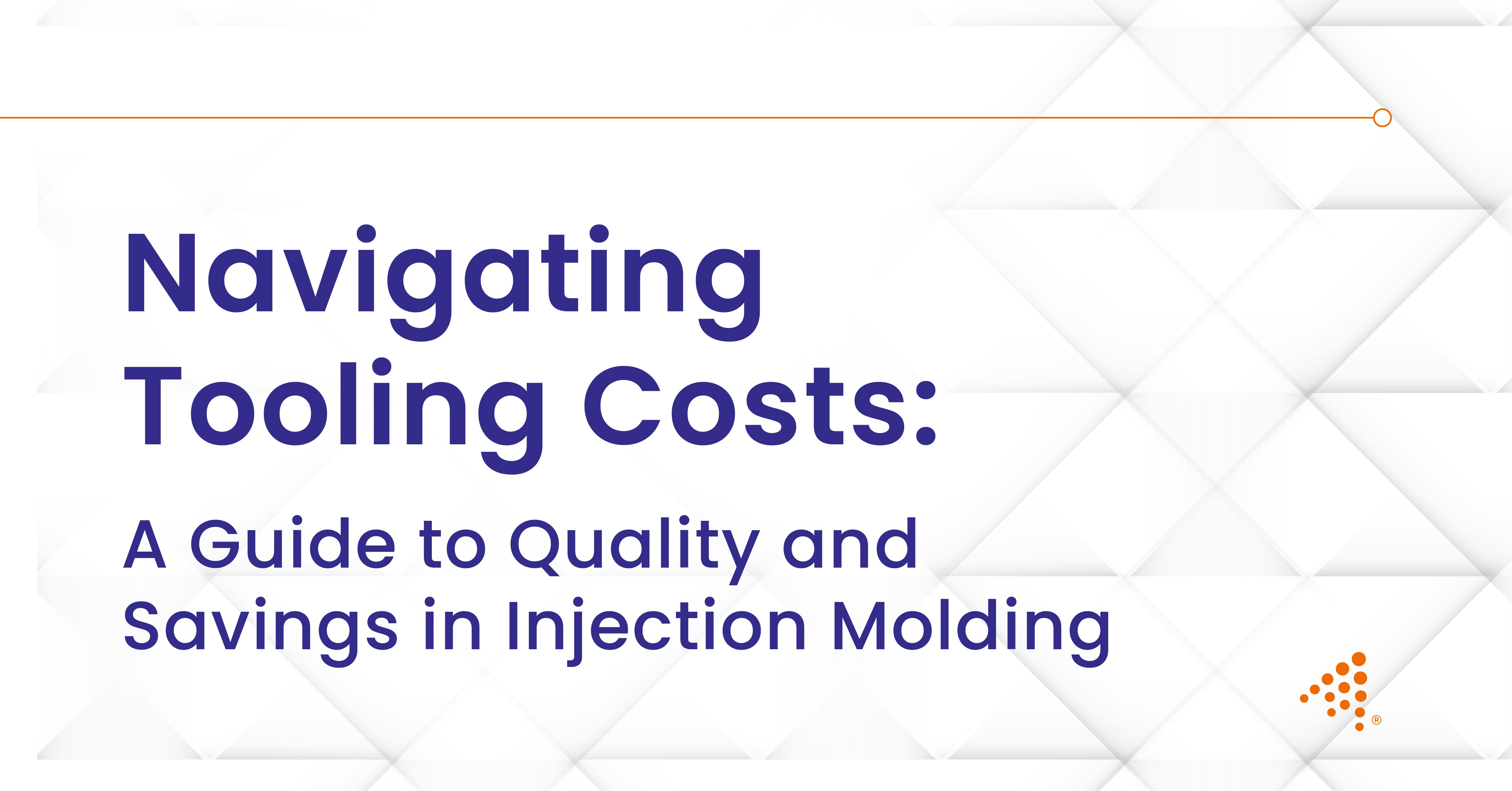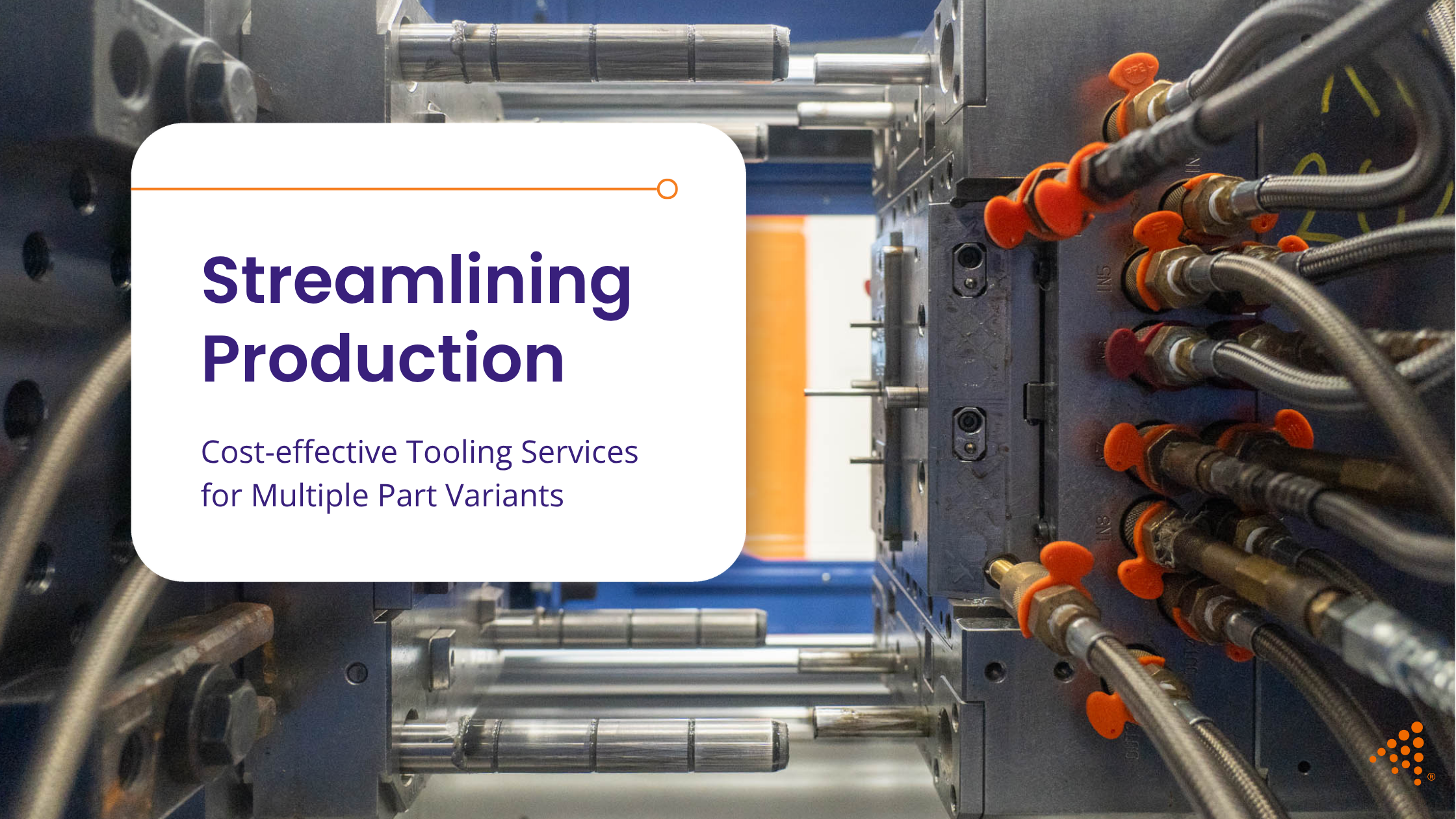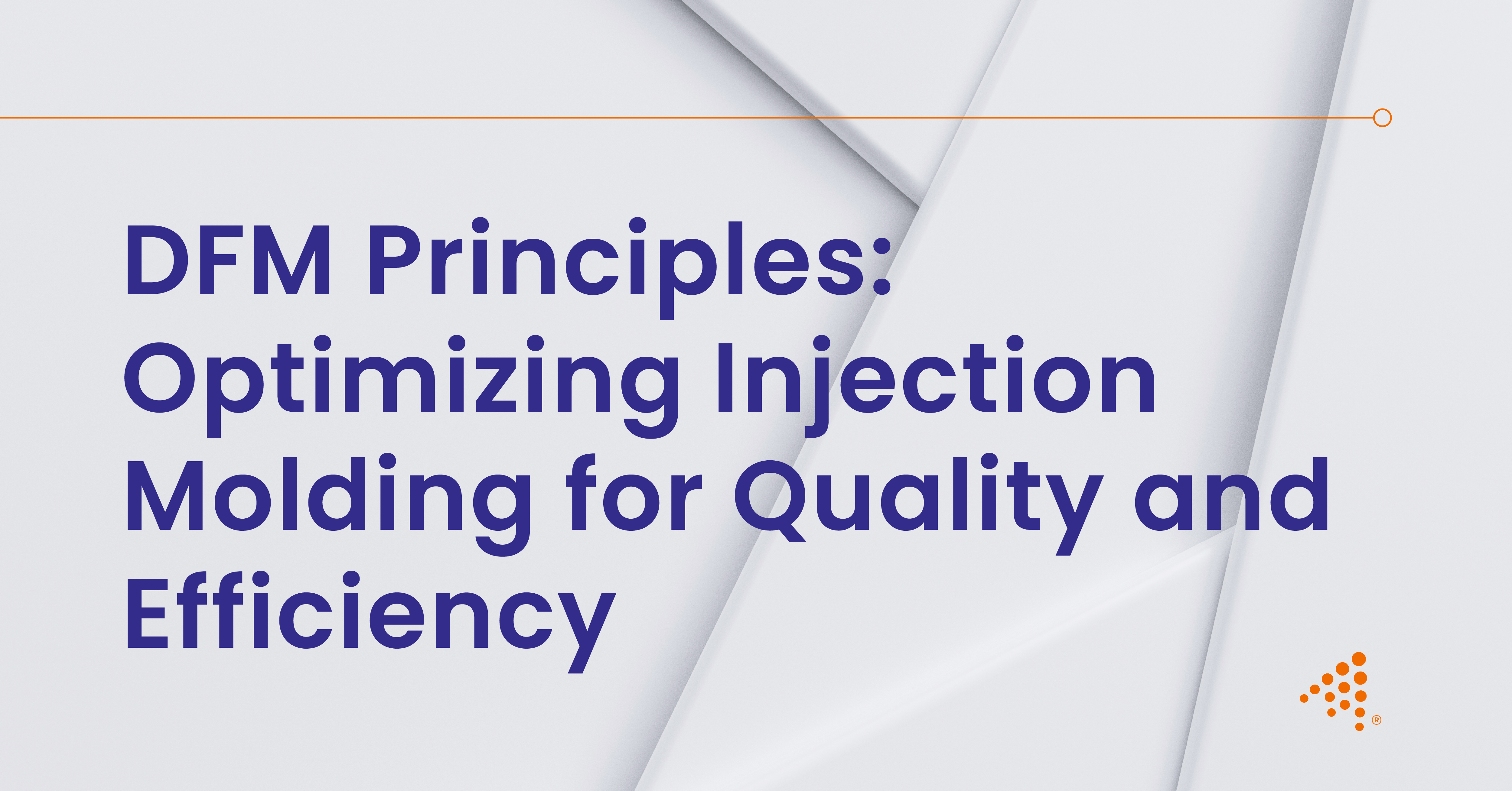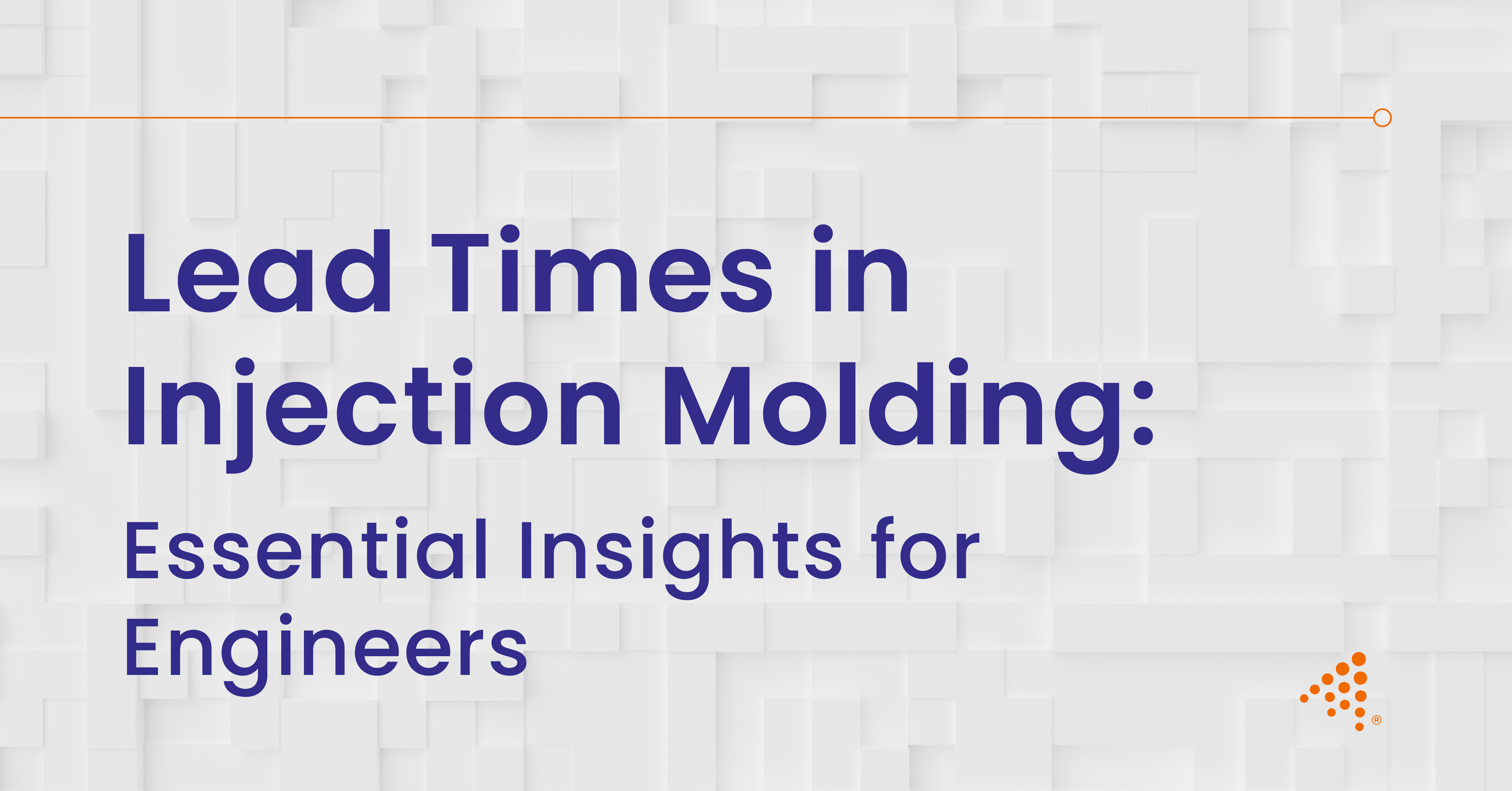Streamlined Tooling for Cost-Effective Production of Part Variants
When product lines expand to include multiple variations of a part, the question of tooling investment becomes a primary consideration. For companies...
3 min read
Nick Erickson : Oct 28, 2025 12:36:00 PM

In the world of custom manufacturing, particularly for high-precision industries like medical devices and aerospace, the injection mold is a significant investment. The cost of this tooling is a substantial part of the initial project budget, and finding ways to manage this expense without negatively impacting the final part's quality is a common goal. Striking this balance requires a strategic approach, blending intelligent design, savvy material choices, and a forward-thinking perspective on the entire manufacturing process.
The truth is, the most impactful cost-saving measures are often implemented long before any steel is cut. By focusing on the design and engineering phase, it’s possible to dramatically reduce tooling complexity and, consequently, its price tag, all while upholding the stringent quality standards required for specialized components.
The most effective strategy for controlling tooling costs begins with a thorough Design for Manufacturability (DFM) analysis. DFM is an engineering practice focused on designing products to be as easy and efficient to manufacture as possible. When applied to injection molding, it involves a collaborative review of the part design to identify and eliminate features that drive up mold complexity and cost.
One of the core tenets of DFM is simplification. Complex geometries often necessitate intricate and costly mold features like side-actions, lifters, or complex parting lines to create undercuts or other challenging features. Each of these mechanisms adds to the initial build cost of the mold, increases maintenance requirements, and can potentially lengthen cycle times. A careful DFM review can often identify opportunities to modify a part's design to eliminate the need for such features without compromising its function. This could involve altering how parts assemble or changing the parting line to allow features to be formed directly in the main core and cavity.
Another fundamental aspect of DFM is ensuring uniform wall thickness throughout the part. Thick sections in a plastic part require longer cooling times, which extends the overall cycle time. They can also lead to molding defects like sink marks or voids. To counter this, non-functional thick sections can be "cored out," meaning they are hollowed out, leaving a thinner, more uniform wall. This practice not only reduces the amount of plastic material used per part but also shortens cycle times and improves the overall quality and consistency of the molded component. A well-designed part with uniform walls is easier to mold, leading to a more straightforward and less expensive tool.
The material used to construct the mold and the number of parts it produces per cycle are also significant factors in the overall cost equation. The decision between different tool steels or even aluminum, and whether to opt for a single-cavity or multi-cavity mold, involves a trade-off between upfront investment and long-term production efficiency.
For lower volume production runs or prototyping, molds made from high-grade aluminum can be a cost-effective option. Aluminum is easier and faster to machine than steel, which significantly reduces the initial tooling cost. However, aluminum is softer and less durable, making it unsuitable for high-volume production or for use with abrasive materials like glass-filled resins.
For high-volume production and parts requiring tight tolerances over hundreds of thousands or even millions of cycles, hardened tool steels like P20 or H13 are the standard. While the upfront cost of a steel mold is higher due to the material cost and longer machining times, its longevity and durability lead to a lower cost-per-part over the long run. The choice of material should align with the project's expected production volume and the type of plastic being molded.
A single-cavity mold produces one part per machine cycle, while a multi-cavity mold produces two or more parts simultaneously. The initial cost of a multi-cavity mold is substantially higher than a single-cavity version because of its increased complexity and size. However, for high-volume projects, the ability to produce multiple parts in a single cycle dramatically reduces the per-part cost and accelerates production timelines. The decision to invest in a multi-cavity mold hinges on the required production volume. If the volume is high enough, the initial investment is quickly offset by the savings in molding time and labor.
Read More About Overcoming Injection Molding Challenges in Medical Design
Viewing tooling as a one-time expense is a short-sighted approach. A well-maintained mold is essential for consistent part quality and can prevent costly downtime and repairs. A proactive preventative maintenance program is a key strategy for reducing long-term costs. Regular cleaning, inspection, and proper storage of the mold can prevent issues like flash, surface defects, and damage to the parting line.
Addressing minor wear and tear as it occurs is far more economical than undertaking major repairs after a catastrophic failure. A mold that is properly cared for will have a longer operational life, produce higher quality parts consistently, and ultimately provide a better return on the initial investment. This commitment to maintenance is a foundational element of a cost-effective and high-quality manufacturing operation.
By integrating DFM services from the outset, making strategic choices about mold materials and cavitation, and committing to a robust maintenance schedule, it is entirely possible to manage and reduce tooling costs effectively without compromising the quality and integrity of the final product.
At Aprios, we understand that tooling is a significant investment. Our team of engineers excels at applying design for manufacturing services to optimize your part designs for cost-effective and high-quality production. If you're ready to explore how to reduce your tooling costs without compromising on quality, contact Aprios today to discuss your next project.

When product lines expand to include multiple variations of a part, the question of tooling investment becomes a primary consideration. For companies...

Designing for manufacturability (DFM) is a foundational practice in the realm of injection molding. It encompasses a series of design choices aimed...

Lead times are a significant consideration in any manufacturing endeavor, and a thorough understanding of the timelines associated with different...